ANIMALS
30 Creatures With Astonishingly Loud Calls
Published
10 months agoon

Shutterstock
The animal kingdom is a cacophony of sounds, where each species uses unique vocalizations to communicate, mate, or even assert dominance. From the deep bellow of the blue whale that resonates across oceanic expanses to the piercing chirps of cicadas that dominate summer evenings, these sounds are more than mere noise; they are vital for survival and reproduction. Some creatures, such as the howler monkey and the lion, are renowned for their loud calls, which can travel vast distances through dense forests or across savannah plains. Others, like the pistol shrimp, stun with their sonic blasts under water, demonstrating the diversity and adaptability of acoustic communication in nature. This list explores thirty of the world’s noisiest animals, each with a sound so powerful it defines their existence and ecological role.
Howler Monkey
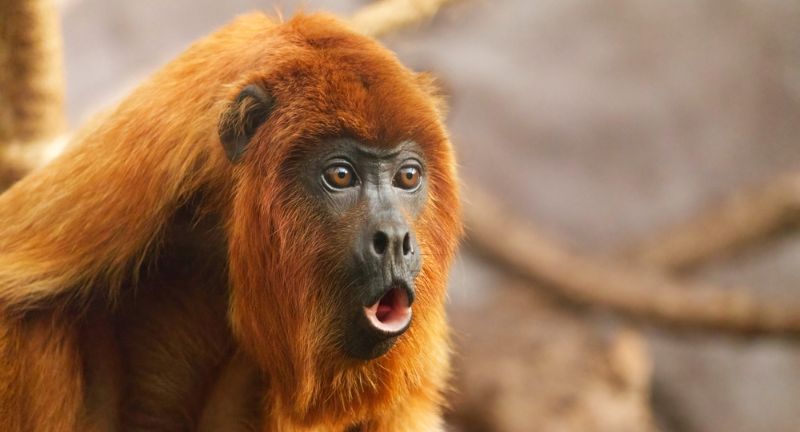
Shutterstock
The howler monkey is renowned for its deafening calls, which can be heard up to 3 miles away, making it the loudest land animal. These calls are primarily used for territorial purposes and communication among troop members in the dense rainforests of Central and South America. The loudness of their howl is facilitated by their enlarged hyoid bone, which acts as a resonance chamber. Howler monkeys are a crucial part of the rainforest ecosystem, aiding in seed dispersal through their diet.
Blue Whale

Shutterstock
Blue whales are not only the largest animals on Earth but also among the loudest. Their calls can reach up to 188 decibels and can travel through ocean waters for hundreds of miles. These vocalizations are primarily used for communication across vast distances in the ocean’s depths where light does not penetrate. The sounds blue whales produce play a key role in social bonding and navigation during migration.
African Elephant
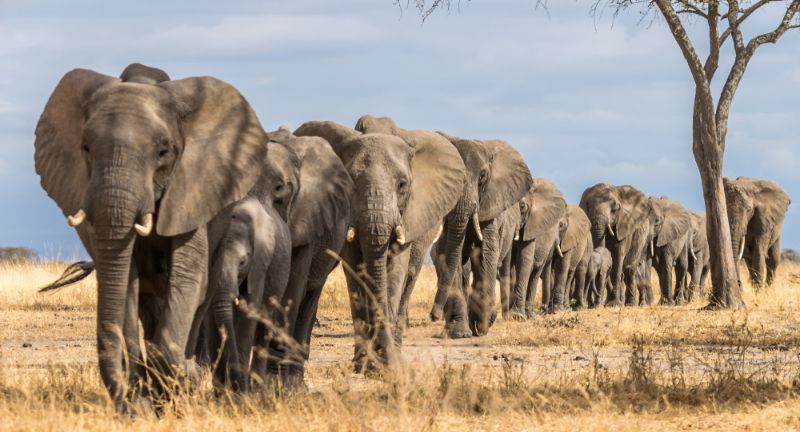
Shutterstock
African elephants communicate using infrasonic rumbles that can travel up to 6 miles, allowing them to stay in contact with their herd across large distances. These low-frequency sounds are often below the range of human hearing but can be felt as vibrations. Elephants use these calls to coordinate with the herd, find mates, and warn of potential threats. Their ability to communicate over long distances is vital for their survival in the diverse habitats of Africa.
Lion

Shutterstock
The lion’s roar is a powerful sound, reaching up to 114 decibels and audible from as far as 5 miles away. This roar serves multiple purposes, including territorial declaration, communication with other members of the pride, and deterring potential rivals. Male lions typically roar more frequently than females, especially during the evening and early morning. The roar of a lion not only underscores its role as a top predator but also reinforces social bonds within the pride.
Wolf

Shutterstock
Wolves are iconic for their chilling howls, which can be heard echoing across up to 10 square miles. These howls are crucial for maintaining contact with pack members, marking territory, and coordinating hunting strategies. Howling serves as a social rally call, strengthening bonds within the pack and warning other packs to keep their distance. The wolf’s howl is one of the most recognizable sounds in the areas they inhabit, embodying the wild and untamed essence of nature.
Kakapo

Shutterstock
The kakapo, a critically endangered flightless parrot native to New Zealand, is known for its powerful mating call. During breeding season, males create a deep, booming call that resonates over 4 miles to attract females. This nocturnal bird has a very low reproductive rate, making its vocalizations crucial for its survival. The unique sounds of the kakapo are a poignant reminder of New Zealand’s rich biodiversity and the conservation efforts required to save such unique species.
Cicada

Shutterstock
Cicadas are among the loudest insects, with some species reaching sound levels of up to 120 decibels. These sounds are produced primarily by males to attract females and can be so intense that they drown out other environmental noises. The cicada’s song is a result of a rapid buckling of their tymbals, structures on their exoskeleton. The din created by a group of cicadas during mating season is not just a natural wonder but also a critical part of their survival and reproduction.
Humpback Whale

Shutterstock
Humpback whales are celebrated for their complex and melodious songs, which can last for up to 20 minutes and repeat for hours. These vocalizations, which can travel great distances in the ocean, are primarily sung by males during the breeding season, likely to attract mates or deter rivals. The songs of humpback whales have been a focus of scientific study, as they evolve over time and differ between populations. These hauntingly beautiful sounds play a crucial role in the social lives of humpbacks and have enchanted humans for centuries.
Northern Elephant Seal
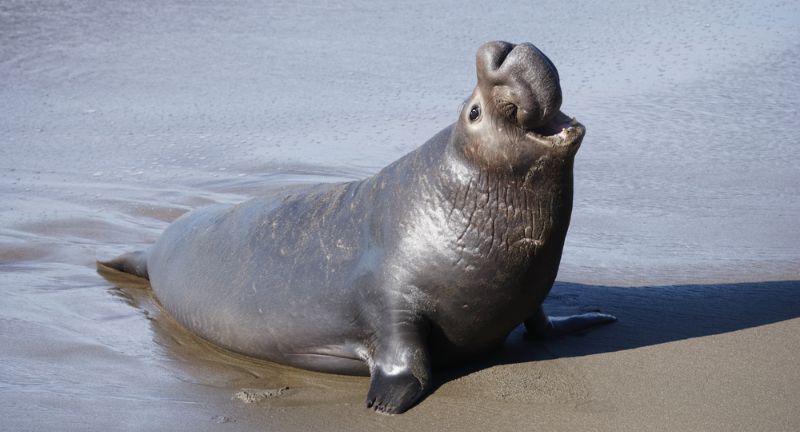
Shutterstock
Northern elephant seals are known for their loud and distinctive vocalizations during mating season. Males produce deep, guttural roars to establish dominance over rivals and attract potential mates on crowded beaches. These sounds are critical for maintaining a hierarchy among males and ensuring reproductive success. The dramatic vocal battles and the physical clashes they can incite are a striking feature of the breeding colonies.
Bison

Shutterstock
Bison communicate through grunts and bellows, which play a pivotal role in their social structure and mating rituals. These sounds help maintain the herd’s organization and can signal different behaviors such as alarm or rallying. During the rut, males vocalize more frequently to display dominance and attract females. The deep, resonant calls of the bison are iconic sounds of the American West, echoing through the plains and signaling their presence to both conspecifics and observers.
Green Grocer Cicada

Shutterstock
The Green Grocer Cicada is particularly notable for its loud and persistent song, which marks the summer months in many regions. These insects are capable of producing sounds that overwhelm the human ear, a defense mechanism against predators. The male cicadas generate these loud noises by flexing their tymbals, which are ribbed membranes on their abdomens. This sound serves as a mating call, attracting females and ensuring the continuation of their species.
Greater Bulldog Bat
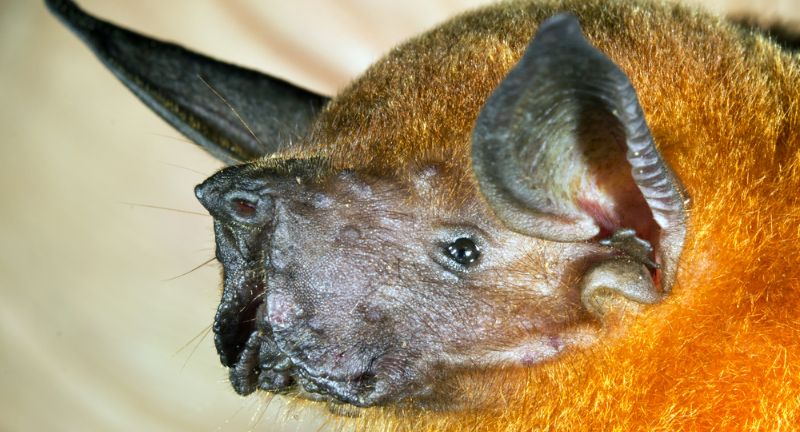
Shutterstock
The Greater Bulldog Bat is unique in its use of intense echolocation calls to navigate and hunt over water. These sounds are so powerful that they can detect small fish just below the water’s surface. The bat emits rapid, loud clicks which bounce back from their prey, providing essential information about its location and movement. This specialized hunting technique highlights the evolutionary adaptations of echolocation in bats, allowing them to thrive in their ecological niche.
Amazon River Dolphin

Shutterstock
Amazon River dolphins are known for their vibrant pink color and their complex acoustic behavior. They use a series of high-pitched whistles and clicks for echolocation and communication in the murky waters of the Amazon Basin. These sounds allow them to navigate and hunt in their environment effectively, avoiding obstacles and locating prey. The vocalizations of Amazon River dolphins are crucial for maintaining social bonds and coordinating group behaviors.
Gibbon
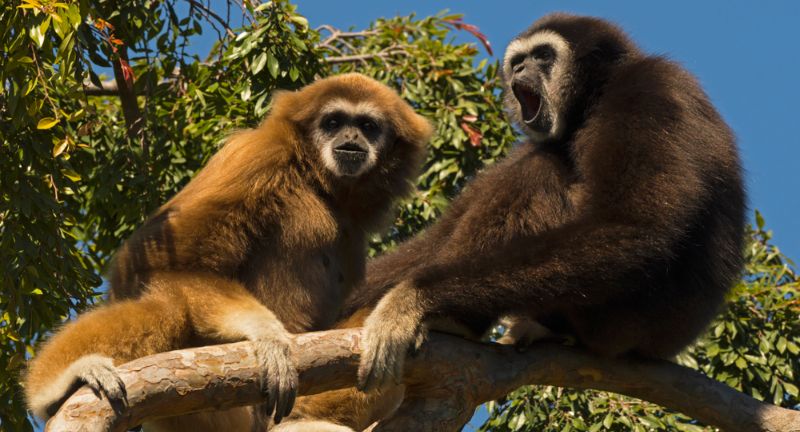
Shutterstock
Gibbons are among the most vocally adept primates, using complex songs to communicate across the dense forests where they reside. These melodious calls are used to mark territory, attract mates, and maintain pair bonds. Gibbon duets, often sung between mated pairs, are a key aspect of their social and reproductive behavior. The clarity and range of their vocalizations are so effective that they can be heard over distances of up to two miles, making them vital communication tools in the wild.
Bellbird
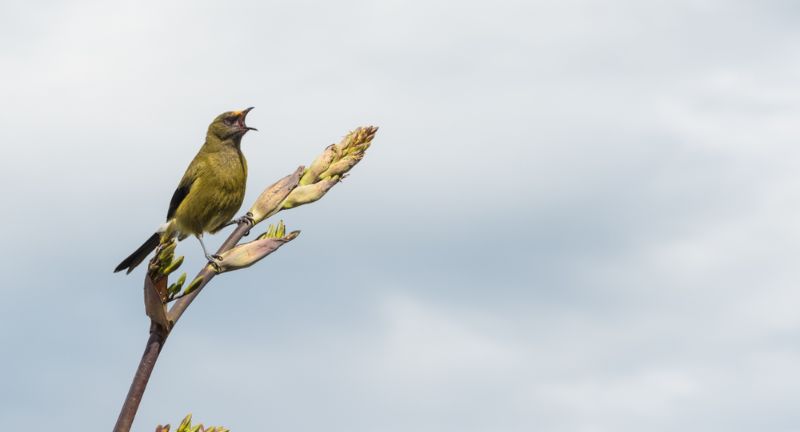
Shutterstock
Bellbirds possess one of the loudest calls among birds, reaching up to 125 decibels, akin to the sound level of a rock concert. These distinctive, piercing calls are primarily used by males to attract females and assert territorial dominance. The bell-like quality of their call gives the bellbird its name and can be heard from great distances, cutting through dense forest noise. This vocal ability is essential for communication in their habitat, where visual signals might be obscured by thick foliage.
Oilbird
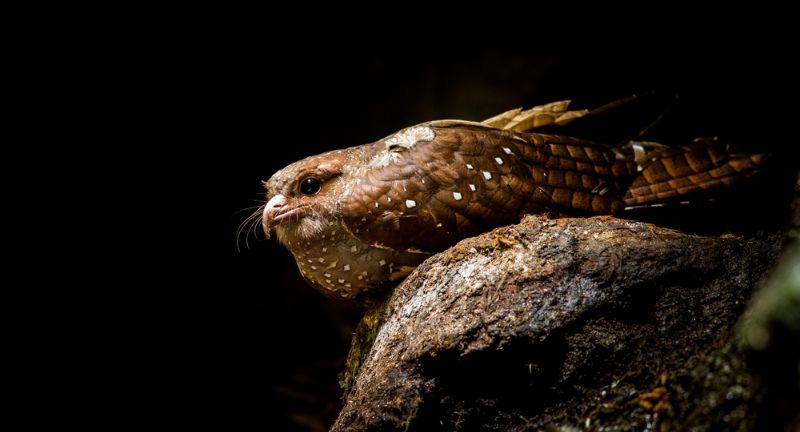
Shutterstock
Oilbirds, also known as guácharos, are nocturnal birds that navigate through dark caves using echolocation. They emit a series of sharp clicks that echo off the cave walls to guide their flight in total darkness. The sound is so intense and continuous that it creates an almost industrial noise when a colony is active. These vocalizations are crucial not only for navigation but also for social interactions within the densely populated roosts.
Hyena

Shutterstock
Hyenas are well-known for their vocalizations, particularly the laugh-like sounds that can escalate into loud cackles. These sounds are not just expressions of excitement but also communicate information about age, social status, and individual identity within the clan. The complexity of hyena vocalizations is indicative of their sophisticated social structure. Hyenas’ calls play a crucial role in the coordination of group hunting and the reinforcement of social hierarchies.
Peacock

Shutterstock
Peacocks are famed not only for their spectacular plumage but also for their loud calls, especially during the breeding season. These calls, which often sound like a loud “keeow,” are used to attract mates and warn off rivals. The distinctive sound can carry across long distances, ensuring that the peacock’s presence is well-noted within its territory. The vocal display, coupled with their visual splendor, makes the peacock one of the most ornate and audible birds in their native environments.
Siamang
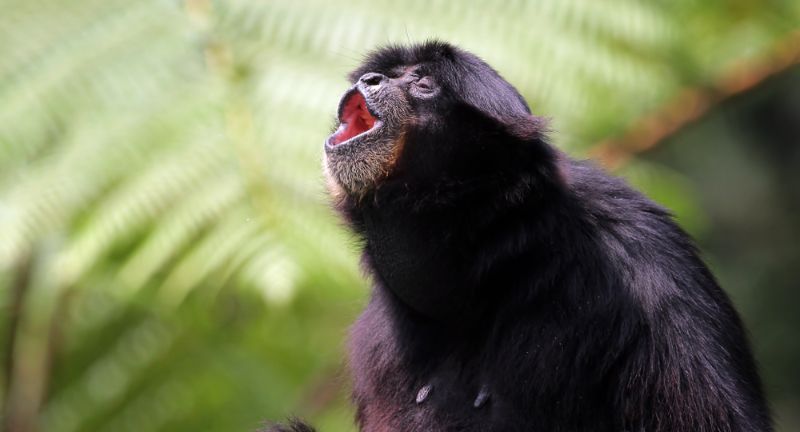
Shutterstock
The Siamang, a type of gibbon, is known for its deep, booming calls that resonate through the Southeast Asian rainforests. These calls serve to communicate with other family groups and assert territorial claims. The siamang’s throat sac acts as a resonating chamber, amplifying their calls so they can be heard up to 2 miles away. This vocal communication is crucial for the cohesion and survival of siamang groups, playing a key role in their social structure and mating practices.
Gray Wolf
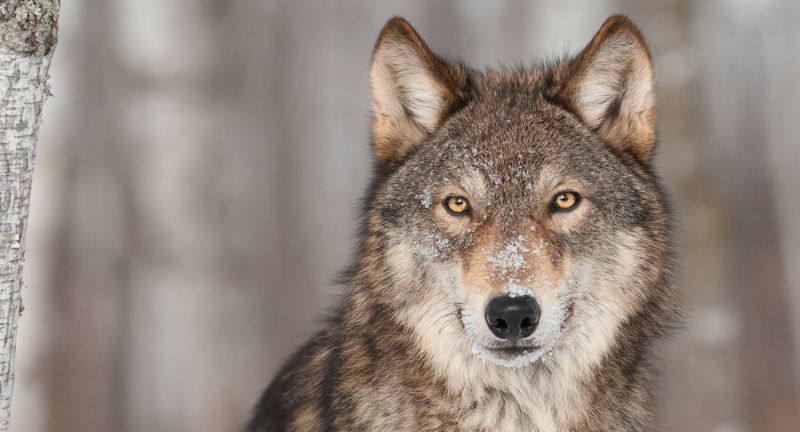
Shutterstock
The gray wolf, a symbol of the wilderness, is recognized by its haunting howls, which carry far and wide through the forests. These vocalizations are essential for communication among pack members, helping to locate each other and maintain cohesion. Howls also serve to warn other packs of their territorial boundaries, deterring potential conflicts. The iconic howl of the gray wolf not only enhances their mystique but also underscores their importance as a keystone species in maintaining ecological balance.
Southern Screamer
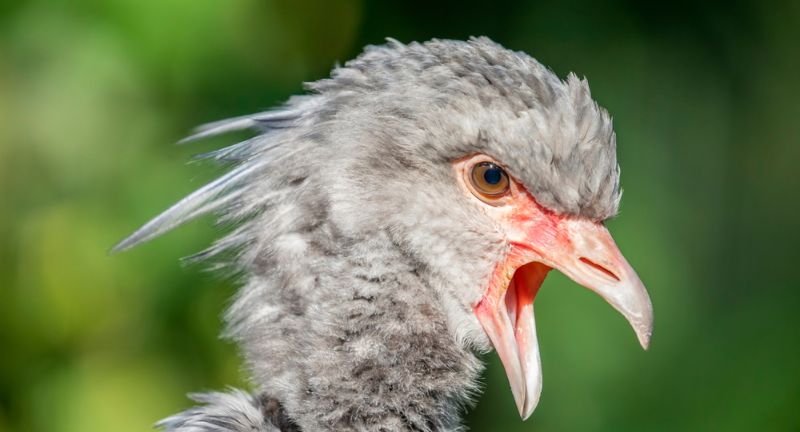
Shutterstock
The Southern Screamer is aptly named for its incredibly loud and piercing calls, which can be heard over long distances. These calls serve as a means of communication between mates and also to warn off intruders in their territory. The intensity of their vocalizations reflects the need to communicate effectively across large, open habitats where sound travels well. Southern Screamers are notable for their robust vocal prowess, which ensures their presence is acknowledged in the wetlands they inhabit.
Red Deer
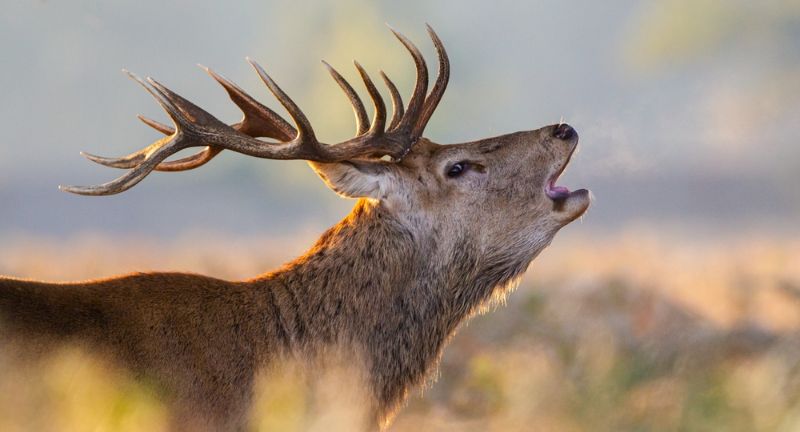
Shutterstock
Red deer are known for their impressive vocal performance during the rutting season, when stags bellow loudly to attract females and challenge rivals. These bellows serve as an assertion of dominance and an advertisement of their fitness as mates. The sound can carry across the forest and open fields, ensuring that a stag’s presence and virility are well advertised. This vocal display is critical for mating success in red deer populations, influencing both the social structure and reproductive patterns within herds.
Cockatoo
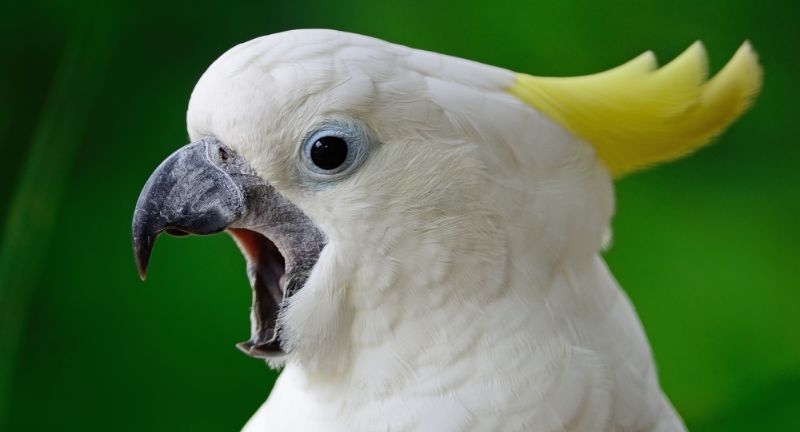
Shutterstock
Cockatoos are known for their loud screech, which can be startling and is used to communicate various messages within the flock. These vocalizations can signify excitement, danger, or social interaction among cockatoos. The intensity of their calls makes them highly noticeable in their natural habitats, often alerting other species as well. Cockatoos maintain strong social bonds through these vocalizations, which are essential for their group dynamics and overall survival.
Bulldog Bat
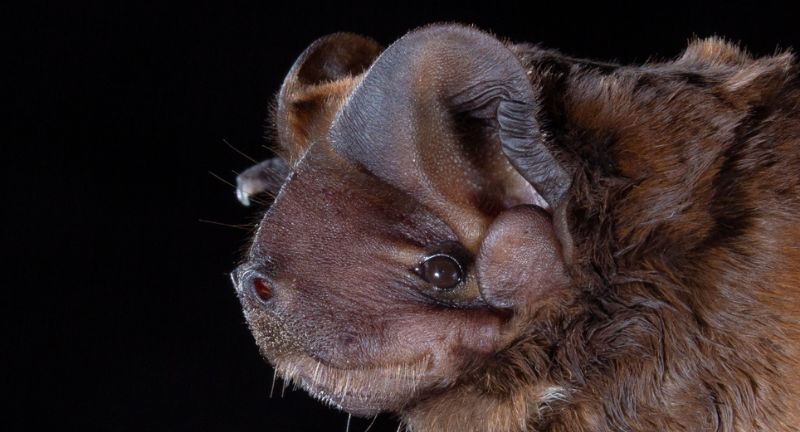
Shutterstock
Bulldog bats are distinguished by their exceptional echolocation abilities, which are among the strongest of any bat species. They use these powerful echolocation sounds to hunt fish, emitting clicks that help them pinpoint the exact location of their prey under water. The sound waves produced by the bat bounce off fish and return detailed information about their size, shape, and movement. This specialized hunting strategy allows bulldog bats to thrive in aquatic environments, showcasing their adaptability and ecological niche.
Alligator

Shutterstock
Alligators are infamous for their powerful bellowing, especially during the mating season. These bellows not only serve as mating calls but also as a display of dominance, with the sound being so intense it can cause water to ripple on their backs, known as “water dancing.” The vocalizations are crucial for communicating presence and territorial boundaries to other alligators. This display of sound and visual cues plays a significant role in the social and reproductive behaviors of alligators, making them a dominant presence in their habitats.
Pistol Shrimp

Shutterstock
The pistol shrimp is notable for its ability to generate a loud snapping sound, which is among the loudest noises produced by any marine animal. This sound is created when the shrimp snaps its claw shut at high speed, creating a bubble that collapses to produce a shockwave. This shockwave can stun or kill prey, allowing the shrimp to capture it easily. The snapping is not only a hunting tool but also a means of communication and deterrence against predators, highlighting the shrimp’s unique adaptations for survival.
Tiger

Shutterstock
Tigers use their roar primarily for communication, to establish territory, and during the mating season. This roar can be heard from up to 2 miles away, serving as a powerful assertion of presence. Tigers are solitary creatures, and their roars help keep other tigers at bay, maintaining necessary boundaries in the wild. The roar also plays a role in the social interactions between tigers, particularly during the breeding season when males seek to attract females.
Macaw

Shutterstock
Macaws are striking not only for their vibrant plumage but also for their loud vocalizations, which can be heard for miles in the dense forests. These calls are crucial for communication within flocks, particularly over large distances and through dense canopy. Macaws use their calls to coordinate movements, identify members of the flock, and warn of dangers. Their loud calls are essential for maintaining social bonds and for the flock’s overall cohesion and survival in the wild.
Harbor Seal

Shutterstock
Harbor seals use a variety of vocalizations, from soft warbles to powerful roars, to communicate during mating and other social interactions. These sounds play a significant role in the social dynamics of seal colonies, facilitating interactions between individuals. During mating season, males may use loud calls to attract females and to challenge rivals. The ability to produce a range of sounds is crucial for the complex social structure of harbor seals, enhancing their ability to communicate in their often noisy, aquatic environment.
Ostrich

Shutterstock
Ostriches, the largest birds on Earth, produce a variety of sounds to communicate, including booming, drumming, and hissing. These vocalizations serve multiple purposes such as mating calls, warnings, and maintaining group cohesion. The booming sound, which is particularly deep and resonant, can be heard over long distances, helping to communicate across the vast open spaces they inhabit. Ostriches use these sounds to assert their presence and maintain social order within flocks, playing a critical role in their survival in diverse environments.
Conclusion
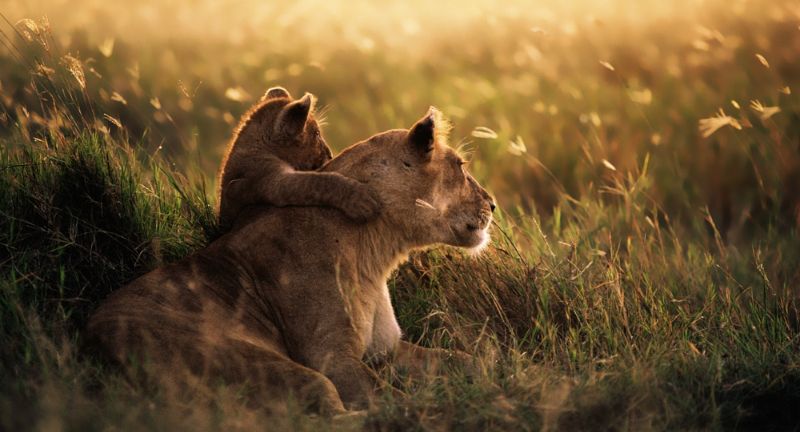
Shutterstock
As we’ve explored the vocal might of these 30 noisiest animals, it’s clear that sound serves as a fundamental aspect of animal behavior and survival. From maintaining social structures to securing a mate, the strategic use of sound is a common thread that connects diverse species across different environments. The volume and intensity of these calls not only reveal the complexity of animal communication but also underscore the adaptability of species to their habitats. Understanding these soundscapes enriches our knowledge of the natural world and highlights the importance of preserving these voices for future generations. As habitats face increasing threats, the conservation of these sonic environments is as crucial as the protection of the animals themselves.
More Amazing Animals+
-


Wasps Are Not So Bad, Here’s Why
-


27 Animals With The Most Elaborate Hunting Strategies
-


Mama bird feeding her babies in their traffic light nest…
-


The Animal Defense League took a trip to the San…
-
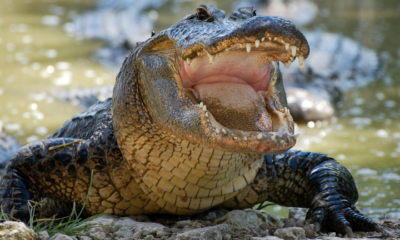

21 Deadliest Animals In North America
-


Fearsome Neighbors: 25 Places Where Wildlife Terrorizes Residents
-


Roaming Mountain Lion Rescued From a Classroom in California
-


29 Caterpillars That Look More Like Fuzzy Aliens Than Animals
-


Humpback whale breaching in Newfoundland, Canada
-


Life’s a Jungle: Uncovering the Most Fascinating Monkey Secrets
-


Mr. Butts the Pug Attempts to Skateboard
-


More – Orphaned bear cubs playing in tree and post-rescue…
